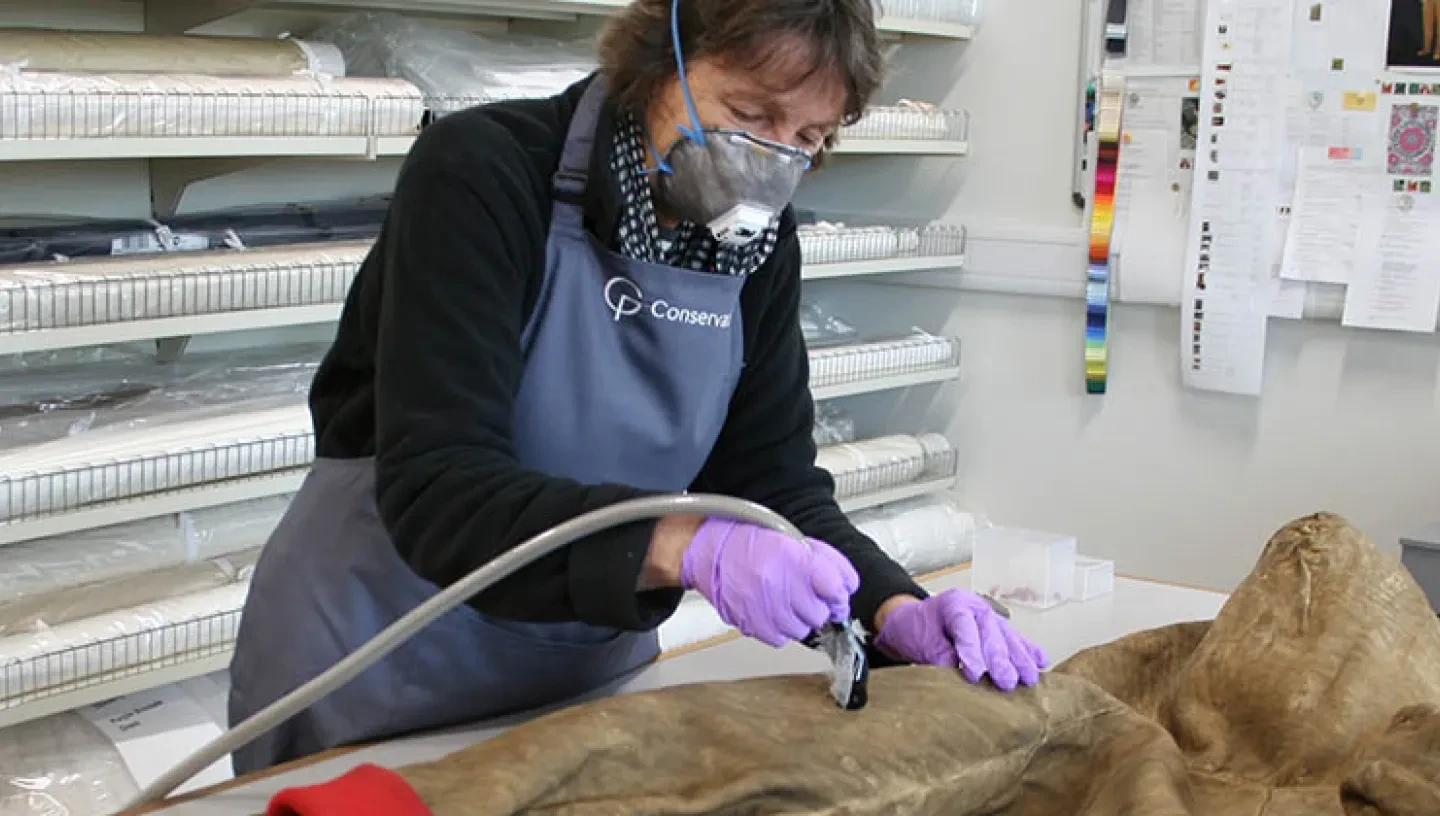
In preparation of the opening of our exciting new galleries, textile conservator Nicky Yates talks us through her treatment of Lieutenant Alfred Parr’s leather over suit, worn on his Arctic Expedition to the North Pole.
var axel = Math.random() + "";
var a = axel * 10000000000000;
document.write('');
See the over suit and other expedition items and stories in our Polar Worlds gallery.
By Nicky Yates, Senior textile conservator
On the 29 May 1875, HMS Alert and HMS Discovery set sail from Portsmouth harbour on an Arctic expedition to attempt to reach the North Pole. In anticipation of the harsh conditions, Lieutenant Alfred Parr had with him an interesting item of clothing, his leather and wool over suit.

The leather suit comprises a single-breasted coat with belt and hood with a bright red, ribbed wool lining and turned back cuffs. The front flapped trousers, which are lined at the top with cotton fabric, have ties on bottom the legs for keeping out the snow. As you can see the over suit shows considerable signs of wear.


Conservation began with a detailed examination where we discovered a complex array of issues. The leather, despite its appearance, had a soft feel similar to Chamois leather. In localised areas it had a mottled surface which we attributed to moth larvae grazing on the surface, causing a cleaner under layer to be exposed. There were also remains of several webs from the webbing clothes moth. I concluded that the infestation was inactive and no pest treatment was required.

During examination we also discovered more interesting markings on the surface of the leather. These were distinct pale circular spots with a smaller dark spot in the centre. I examined the markings under a digital microscope at x67 magnification and was unable to establish their cause. It wasn’t until a colleague attended a recent course that we were able to identify the marking as being a result of microbial attack. This most likely happened when the suit was stored damp for a long period of time.


The trousers were much dirtier than the coat but much of this was ingrained into the leather. However, the main problem with the trousers was the creased cotton lining to the front flap. The heavily creased areas were likely to split causing more damage if left untreated. So it was important to try and lessen the creasing. This was achieved by a technique called poulticing. This is the process of lightly dampening the surface with water vapour through a semi-permeable membrane. After poultucing the surface was weighed down with glass weights until completely dry.

Once the coat and trousers were conserved, they were prepared for display by mounting them onto a conservation grade, fibre-glass mannequin. The mannequin was then padded out to the required shape in layers. We used conservation grade materials such as polyester wadding and needle-felt covered with cotton jersey to provide the right support for the garment. The arms were formed from aluminium and Plastazote flexible armatures which were also fitted.


And finally, the full mannequin dressed and ready for display in the Kristian Gerhard Jebsen Gallery: Polar Worlds!